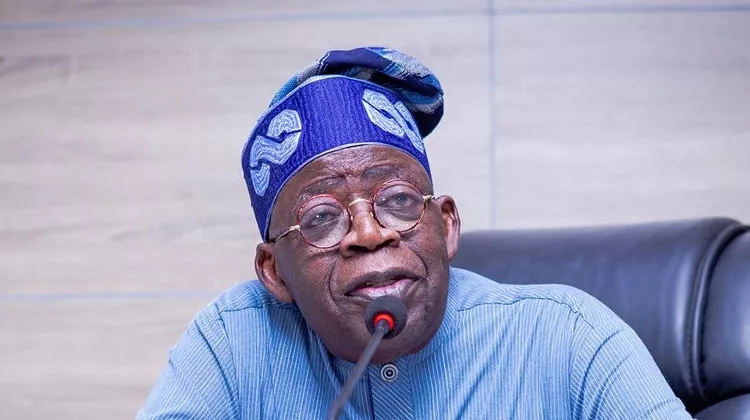Steering Nigeria’s Economic Futur: A Holistic Approac
In the grand tapestry of a nation’s destiny, the threads of economic strategy are intricately woven, guiding the trajectory of progress and prosperity. As the dawn of a new era breaks on Nigeria’s horizon, President Tinubu’s administration stands at the crossroads, entrusted with the task of orchestrating the nation’s economic symphony. The canvas is vast, painted with a complex blend of challenges and opportunities—high inflation, unemployment woes, fluctuating foreign direct investment (FDI), and the ever-elusive pursuit of sustained economic growth. It is within this dynamic landscape that the orchestra of economic strategy must be conducted—a harmonious fusion of visionary aspirations and pragmatic realism.At the core of effective strategy lies the imperative to align grand ambitions with the practical means at hand, a concept illuminated by John Lewis Gaddis in his work “On Grand Strategy.” The interplay between aspirations and capabilities forms the crux of any nation’s developmental narrative. As we chart the course forward, the wisdom encapsulated in Gaddis’s insight resounds: “If you seek ends beyond your means, then sooner or later you’ll have to scale back your ends to fit your means.” This poignant reminder underscores the need for strategic balance, a symphonic blending of aspirations that resonate with the nation’s current capabilities.Central to this alignment is the concept of national competitiveness, a realm explored by Harvard Business School Professors Michael Porter and Richard Vietor. Porter’s “diamond” framework elucidates the interplay of factors—factor conditions, demand conditions, related and supporting industries, and firm strategy—that foster competitive advantage. Richard Vietor further illustrates that national competitiveness extends beyond theoretical frameworks, manifesting in practical outcomes such as investment attraction, job creation, and economic growth. Nigeria’s ascent on the global stage hinges upon its ability to transpose these concepts into actionable strategies. A robust national economic strategy should echo these principles, capitalizing on Nigeria’s unique strengths while aligning with the dynamic currents of global markets.However, crafting an effective economic strategy is not merely a matter of visionary ambition; it necessitates a meticulous diagnosis-first approach. Dani Rodrik’s wisdom rings true in Nigeria’s economic landscape, where the challenges of high inflation and unemployment intertwine with the complexities of FDI fluctuations and uneven economic growth. A blanket prescription is insufficient. High inflation chips away at the purchasing power of citizens, while youth unemployment gnaws at the potential of a vibrant workforce. The ebb and flow of FDI, coupled with erratic economic growth, adds further layers of intricacy. Addressing these multifaceted challenges mandates an intricate understanding of their root causes.Enter the diagnostic approach—a method that dives deep into the layers of complexity underlying these challenges. High inflation, for instance, is not a singular phenomenon; it emerges from the interplay of supply chain disruptions, monetary policy misalignments, and global market dynamics. Similarly, unemployment is not an isolated issue; it’s a complex mosaic formed by the intricate interplay of skills gaps, labour market dynamics, and industry-specific demands. To navigate these waters effectively, President Tinubu’s administration must embark on a journey of profound diagnosis. This journey uncovers the nuances that lie beneath the surface, enabling the formulation of tailored, effective solutions that strike at the core of these challenges.The path forward is guided by both vision and the lessons of history. The National Agenda 2050, a legacy bestowed by the preceding administration, holds the keys to continuity and insight. It serves as more than a relic; it’s a testament to the nation’s forward-looking aspirations. Studying the National Agenda 2050 is an homage to strategic continuity—an acknowledgment that progress builds upon the foundation laid by the past. This agenda, painstakingly crafted with foresight, reflects a collective vision of Nigeria’s long-term aspirations. It stands as a roadmap, illuminating the path already traversed and casting light on the challenges that lie ahead. President Tinubu’s administration’s embrace of this legacy is not a sign of dwelling in the past, but a declaration that the nation’s journey is a continuum, a tapestry woven with threads of both past wisdom and future dreams.The National Agenda 2050 offers insights that transcend the confines of time. It provides the administration with a starting point, a canvas already adorned with strategic strokes. While adaptation and evolution are key, the agenda’s foundation serves as a guidepost, offering valuable insights into the nation’s priorities and aspirations. It’s a source of historical wisdom, an account of challenges confronted, and a wellspring of ideas that resonate with the very heartbeat of the nation.Institutional reforms form the bedrock upon which any effective national economic strategy is built. A harmonious symphony requires a conducive environment in which the orchestra of economic progress can flourish. Transparency, accountability, and efficiency are the key notes that must be played in this symphony.Institutional reforms entail streamlining regulatory processes to eradicate bottlenecks that hinder economic growth. The administration should foster an environment where policies are clear, regulations are consistent, and bureaucratic hurdles are minimized. This approach promotes investor confidence, attracting both local and foreign capital that is essential for sustainable development.The public sector is an integral part of this orchestra, and its efficiency is paramount. Reforms should focus on enhancing the capacity of public institutions, enabling them to deliver public goods and services effectively. The administration should prioritize merit-based appointments, training, and skill development for public servants to ensure that expertise and dedication drive governance.Moreover, public-private partnerships (PPPs) can harness the agility and innovation of the private sector while leveraging the stability and reach of the public sector. Collaborative efforts can transform infrastructure development, healthcare, education, and other critical sectors. These partnerships must be underpinned by transparent contractual frameworks to foster accountability and minimize risks.As the symphony of economic strategy nears its conclusion, its crescendos into a harmonious blend of policy recommendations that resonate with the principles of continuity, diagnosis, competitiveness, and institutional reforms. As such, the following policy rrecommendations should be considered:Prioritize investment in education and skills training to empower the workforce. Creating pathways for job creation and vocational training will unlock the potential of Nigeria’s youth demographic.Launch a comprehensive infrastructure drive that addresses critical sectors such as transportation, energy, and digital connectivity. Robust infrastructure will catalyse economic growth and attract investment.Implement targeted policies to reduce reliance on oil exports. Foster the growth of non-oil sectors such as agriculture, manufacturing, and technology to promote resilience and broaden the economic base.Streamline regulatory processes, enhance transparency, and foster accountability to create an environment conducive to local and foreign investment. Public-Private Partnerships can harness the expertise of the private sector.Embrace the transition to a green economy through promoting renewable energy, sustainable agriculture, and environmental preservation. This positions Nigeria as a leader in sustainable development.As Nigeria embarks on its economic journey, President Tinubu’s administration stands poised to conduct the symphony of progress. The orchestra is rich with elements—a strategic alignment of aspirations and capabilities, a resonant chord of national competitiveness, the art of diagnosis to address complex challenges, and the wisdom of continuity through the National Agenda 2050. With a harmonious blend of policy recommendations, including the power of institutional reforms, the administration has the tools to compose a symphony that reverberates through the fabric of the nation’s future—an anthem of resilience, innovation, and transformation that echoes across generations.





